Gruss gott my sweet friends. Happy Fashion Friday! I hope this week’s post has you smiling with delight. I tried my take on a bit of cottage core dressing with The Dirndl and the Dachshund.

The Dirndl and the Dachshund
I am no stranger to the dirndl. I purchased two while living in Germany.
The dirndl is worn in alpine regions such as Bavaria – Germany, Austria, Switzerland, Liechtenstein and Italy. The traditional dirndl is comprised of a blouse, skirt, bodice, and apron. The dirndl design can vary between regions and even villages.
Junge Schankmagd bringt Bier an den Stammtisch (Young barmaid bringing beer to the regulars), 1872 by Hermann Volz.

Dirndls were originally worn by women in rural communities and designed for hard work. In the late 19th century the dirndl was adopted by the upper and middle classes and is now considered to be a folk or ethnic costume. It fell out of fashion during World War II but saw a resurgence in the 1990s and it is still going strong.
Tändelndes Paar beim Buttern in der Stube (Couple courting while churning butter) by Hermann Kauffmann

Traditional dirndls can come in two forms. Simple designs can be worn for everyday occasions. They are generally made from cotton or wool.
Photo by Florian Schott.


Fancier dirndls are worn in traditional festivals and as formal wear. Gorgeous linens and silks are often used.
Dirndl in the style of Isarwinkler Tracht, near Bad Tölz (Bavaria) photo by Florian Schott.


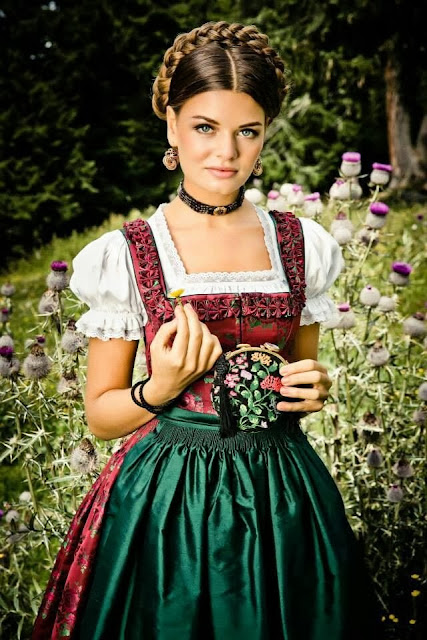

It’s not uncommon for several coordinating fabrics to be used on one dirndl.

Embellishment can come in the form of various trims.
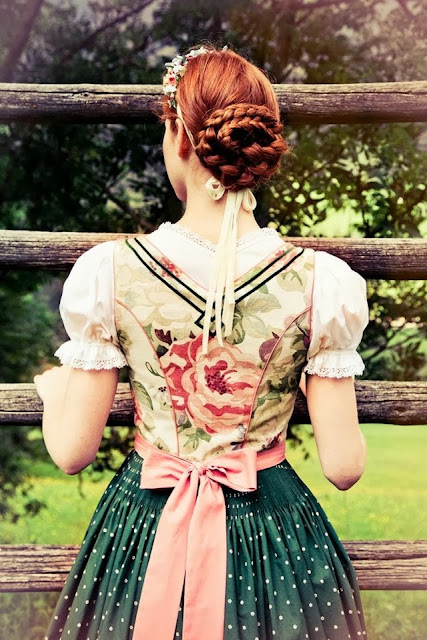
As well as embroidery.

Charivari Chains
Charivari chains and belts are also sometimes worn.

They are a form of traditional Bavarian jewelry made of silver with various coins and charms attached.
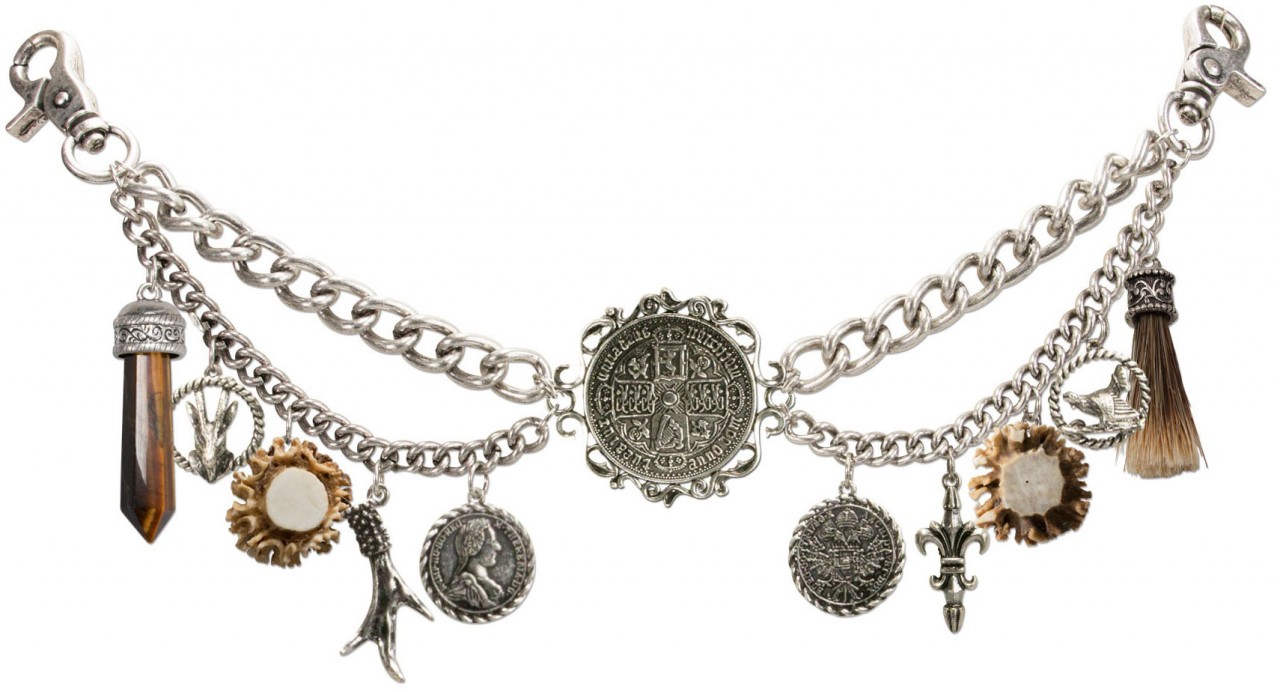

Originally men wore them on the belt of their lederhosen as a talisman for a successful hunt

Another darling accessory is the kerchief.
I have some calico cuties in MY SHOP.
The reverse side is vintage fabric patchwork.
The Pattern
Wanting to make an everyday dirndl I selected Burda 8448, view B.
I would classify Burda patterns best for intermediate to advanced sewists. As the patterns are designed in Germany the translation of the instructions is not always very clear.

I opted to use up various small pieces of vintage cotton fabrics I had found at estate sales.
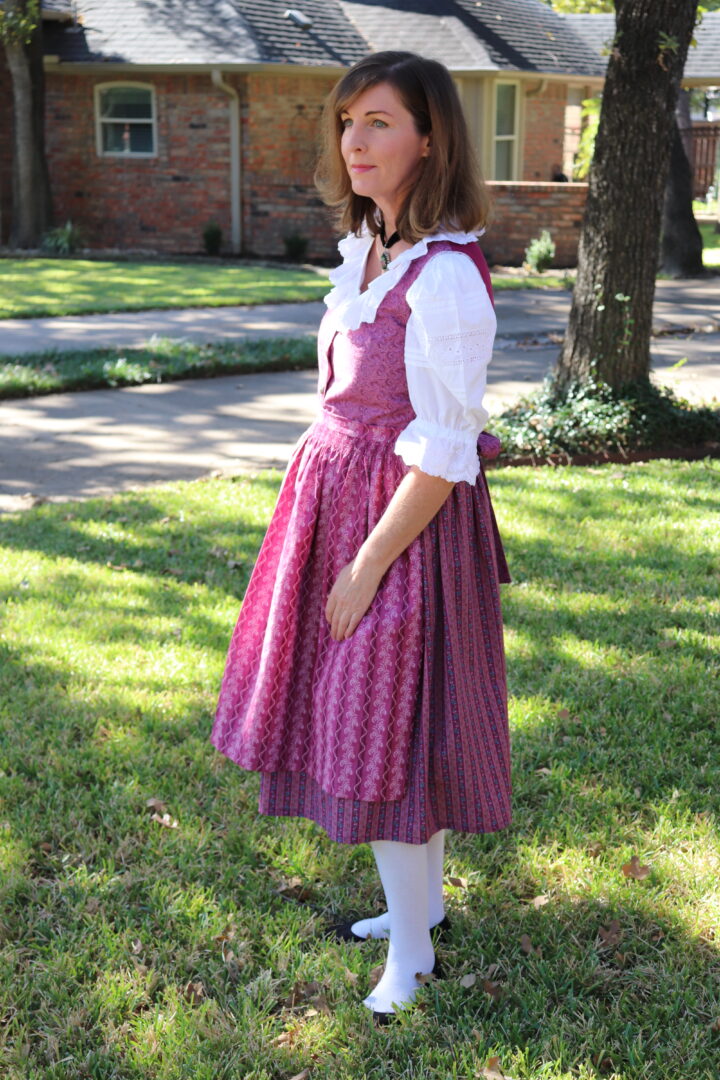
A piece of vintage/antique tatting was dyed to match and embellishes the back of the bodice.
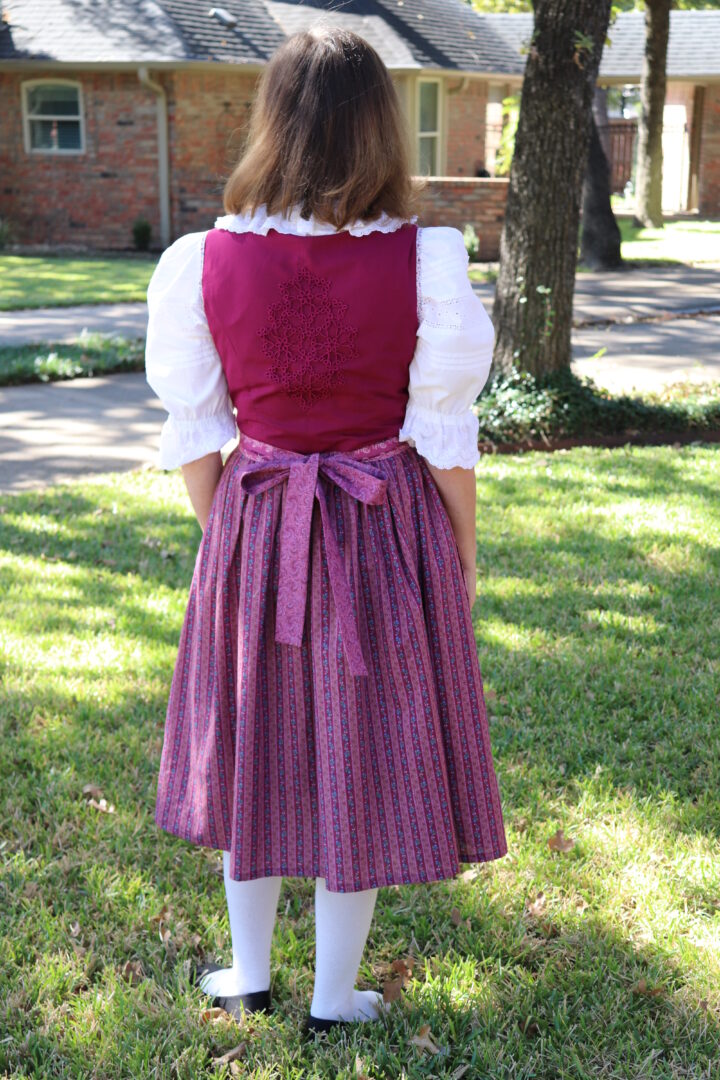
I go into great detail about this in this week’s video.
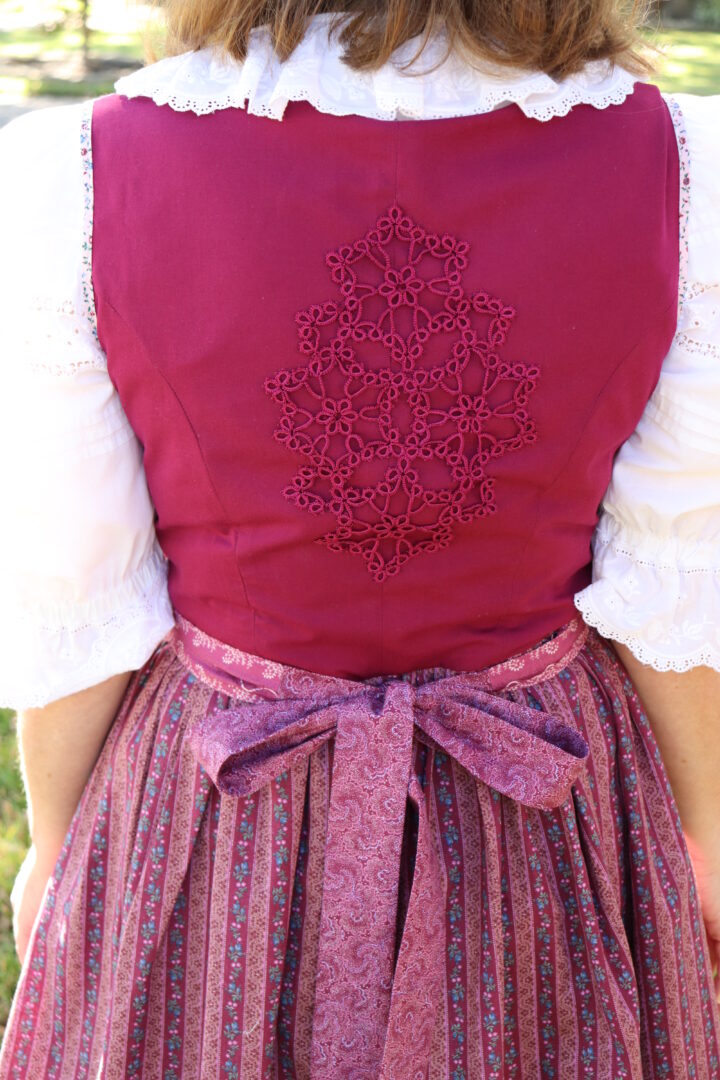
The dirndl blouse and necklace are vintage treasures.
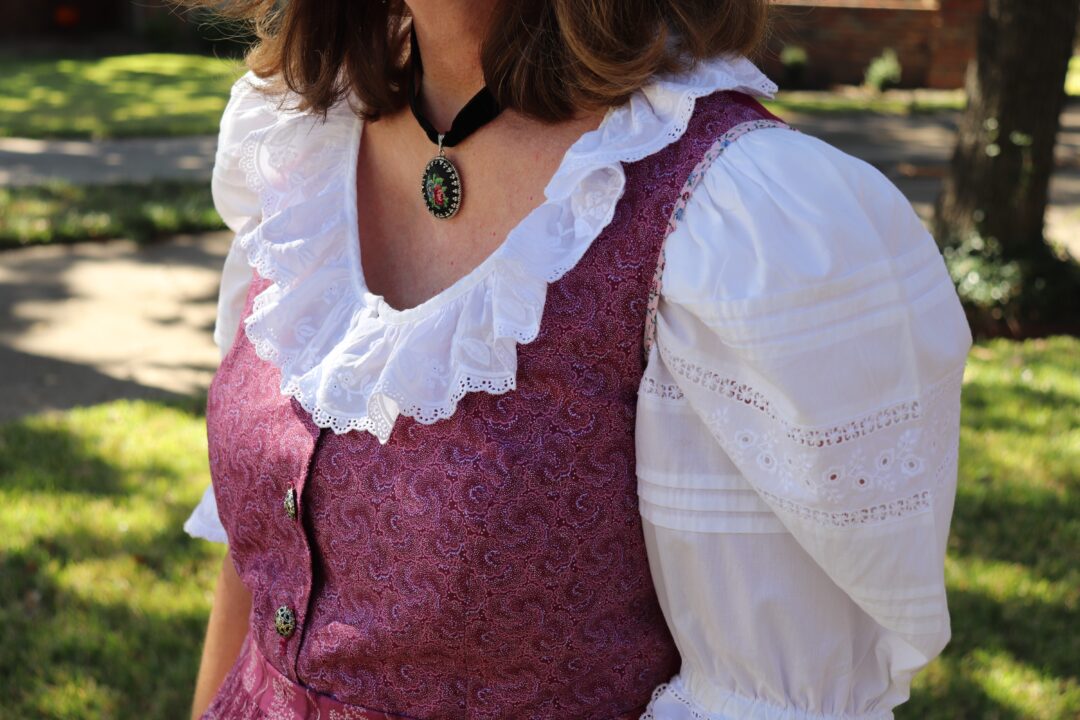
I am in love with the shirred detailing near the waistband of the apron.
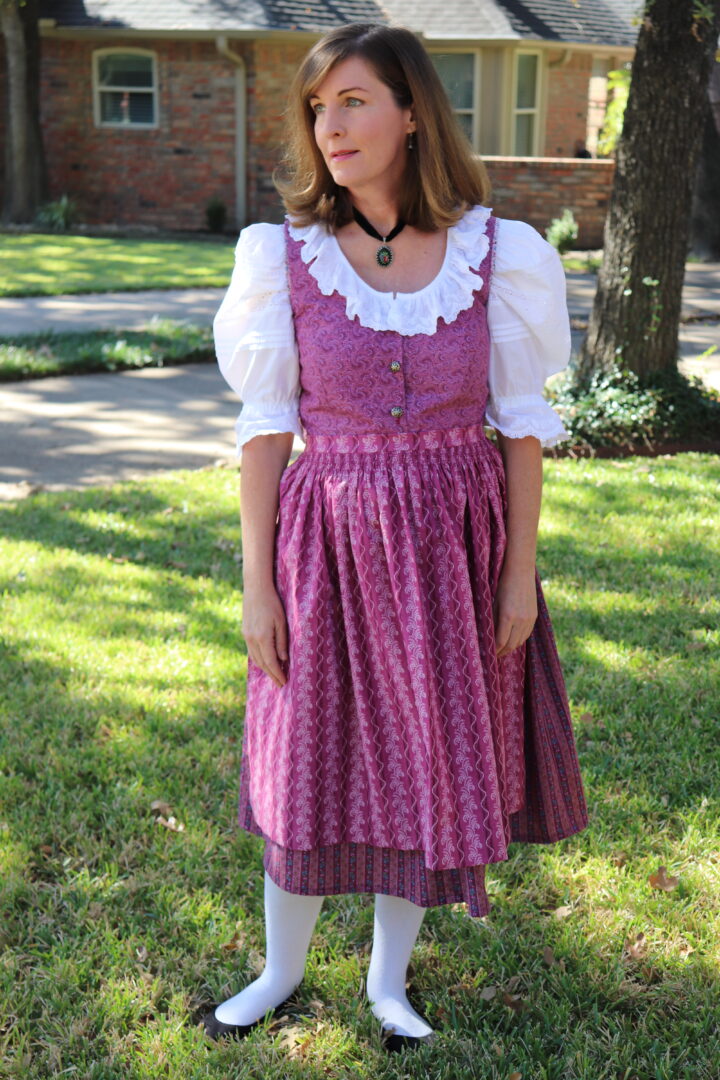
Let me know if you would like to see this style of apron in the shop.
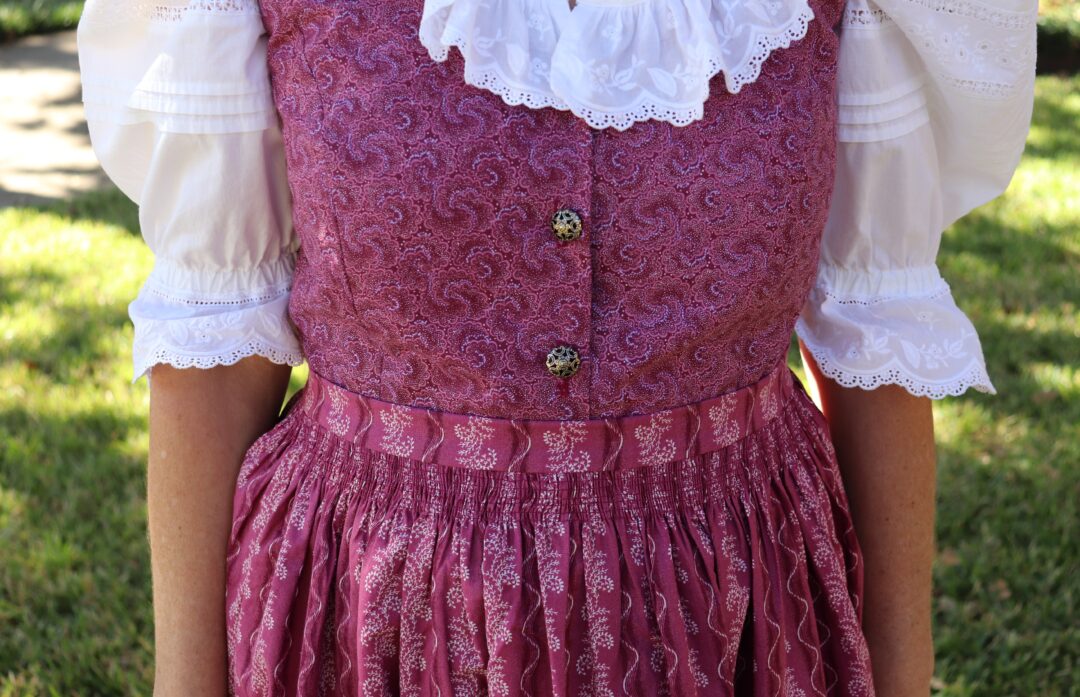
Costume Context
Because this clothing is considered to be a folk costume or ethnic garment there are those who may raise the question, “Is this cultural appropriation?”
I do think that there are some garments that should not be worn by anyone outside of that community. One example is a Native American/Indigenous headdress because it is a sacred element.
However, there are other folk costumes that are looked upon as something that can be tastefully made and worn by everyone. This is often referred to as cultural appreciation. For me, I believe that the dirndl is one such garment. But I acknowledge that this may not be the opinion of everyone.
The dirndl and other Tracht clothing is part of my own personal heritage. My Grandma Jingles, Eleanor Becker Ingalls, was the child of German parents. She was a first-generation American on her mother’s side. Her mother, Emma, immigrated to America when she was 16. I also lived in Germany for three years. My son was born there.
You are welcome to voice a different opinion in the comment section. I always encourage other points of view. But please remember to do so in a kind manner.
This Week’s Video
You’ll have to actually watch the video for sausage dog shenanigans starring Gracie the doxie.
I’ll see you Sunday.
Tschuss!
Laura
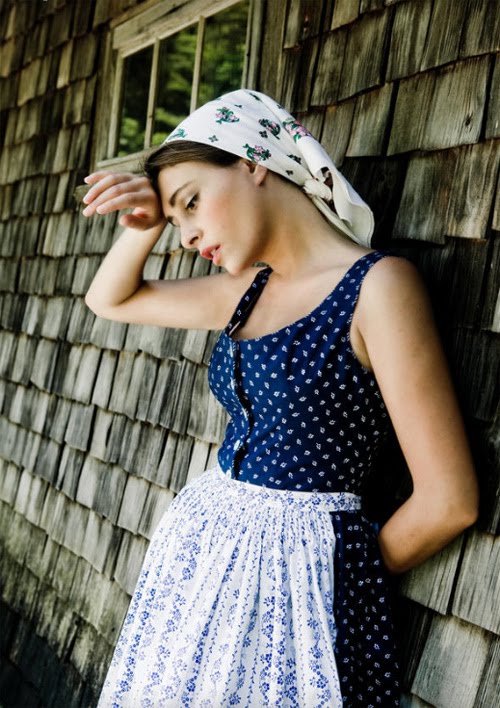
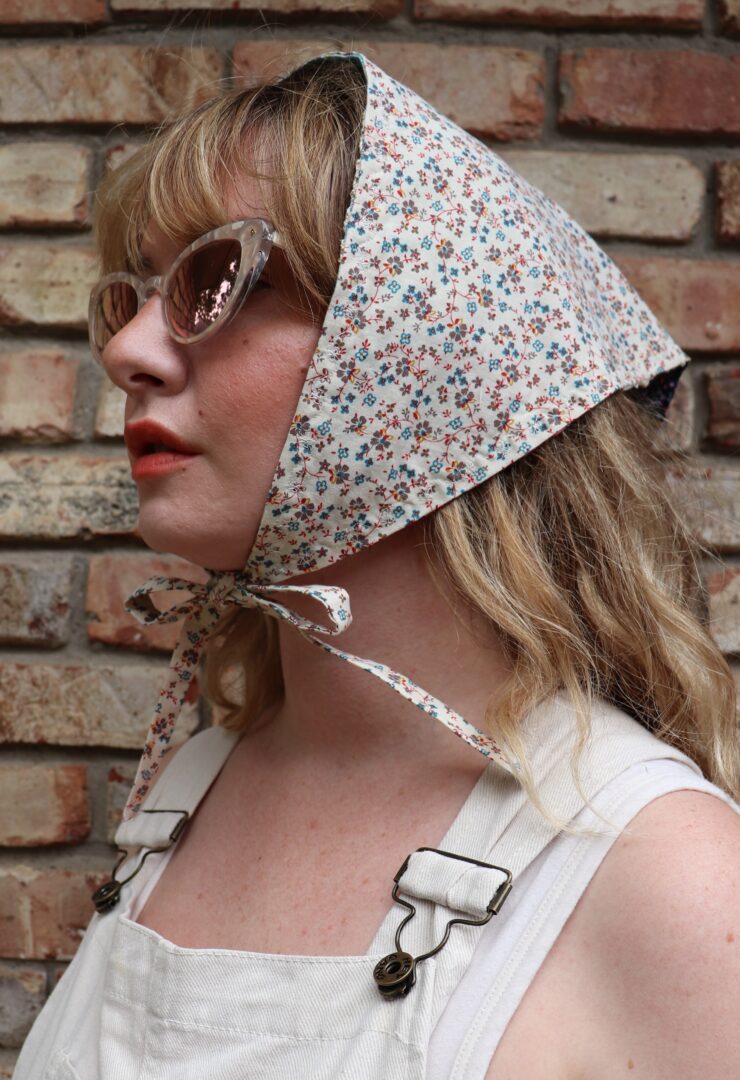
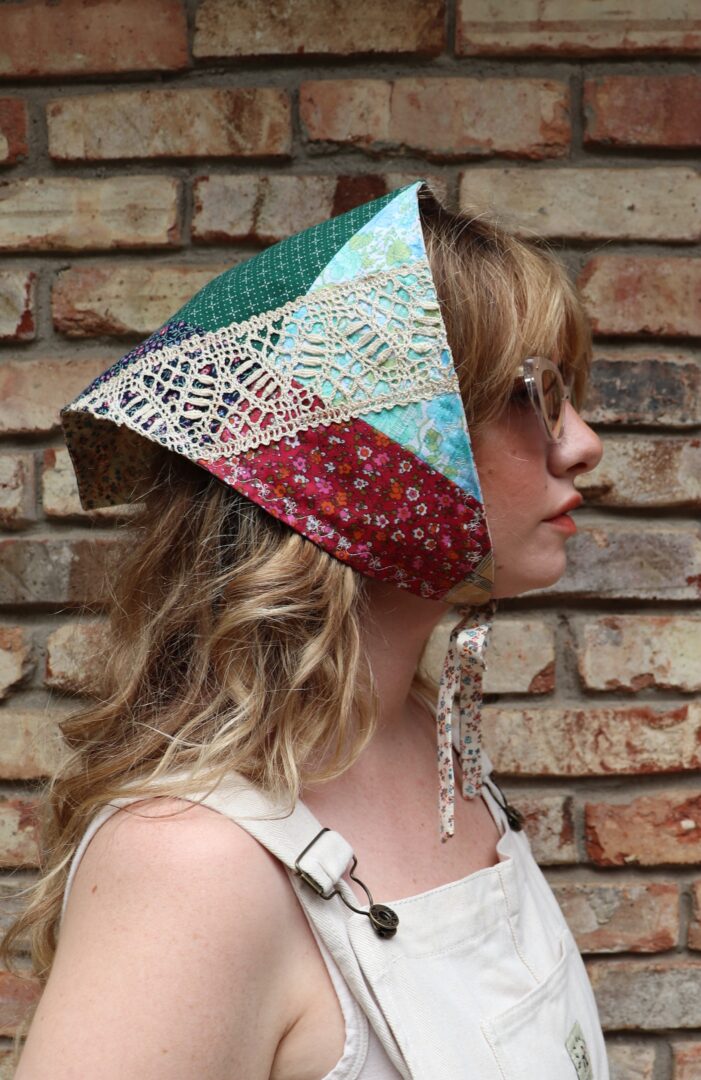
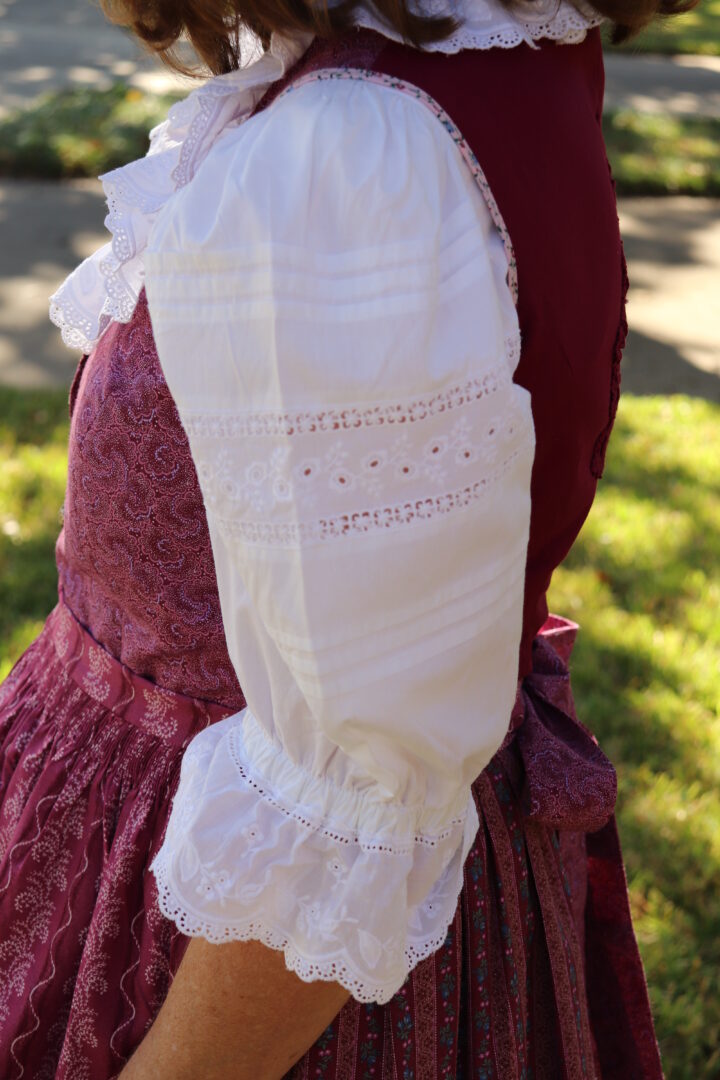
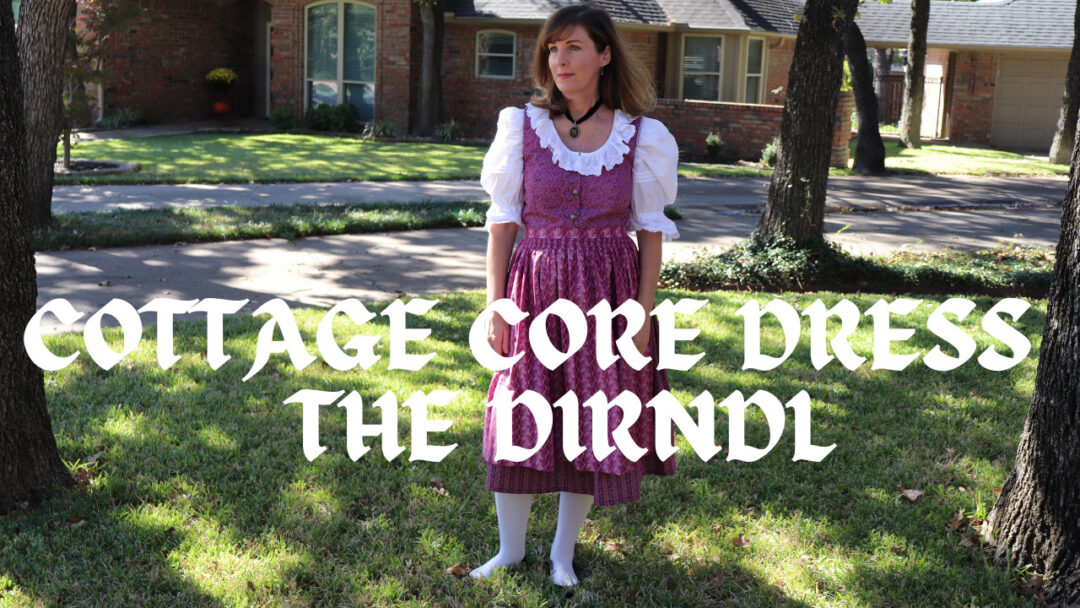
It’s sad these days that the idea of cultural appropriation even has to come up in a subject like this. I agree that some items from a particular culture should not be worn by those outside that culture. But I don’t think it’s wrong to dress in a cultural costume out of love for the style and a tribute to the culture.
I love this outfit.
Your dress is beautiful. I love the pretty mulberry colour and your stitching work is as perfectly done as ever. Thank you for your post! 🙂
Thank you for being sensitive enough to cultures and indigenous people to acknowledge the possibility of cultural appropriation. It doesn’t make me “sad” at all, it makes me happy that we’re more aware of things we have done in the past that are insensitive and hurtful to groups of people (did your school have you dress up as indigenous people in construction-paper headdresses for “Thanksgiving” pageants like mine did? Ugh, the hindsight of that mortifies me). I don’t see this Dirndl as appropriation at all, even if you didn’t have German heritage. I like the term “Cultural Appreciation” for this type of costuming.
Beautiful Dirndl, Laura, and WOW on that dye-matching! Impressive!! 🙂
Oh, my gosh, that is darling! I loved seeing the different and beautiful varietys of fabric and pattern. I have ancestors from Bavaria, too.. In copies of the translated letters that were written home from these ancestors, referrence was made to how the move to America made it so much easier for the women as they no longer had to walk up the mountain everyday to work. I know they grew flax and made linen to sell and trade so maybe the land was mountain side., I don’t know. They kept copies of sent letters because they sometimes didn’t get to the intended person. They used wine for ink. It was mentioned that they were never able to produce a decent wine in Illinois. These copies are now housed in the Newberry Library in Chicago. They are quite interesting and all of the later generations and family branches can read them. There are probably Ingalls letters housed in a museum or library somewhere. I’m sure you know. I think the mail was unreliable, at least, in the 19th century. Kind of like today! ha!